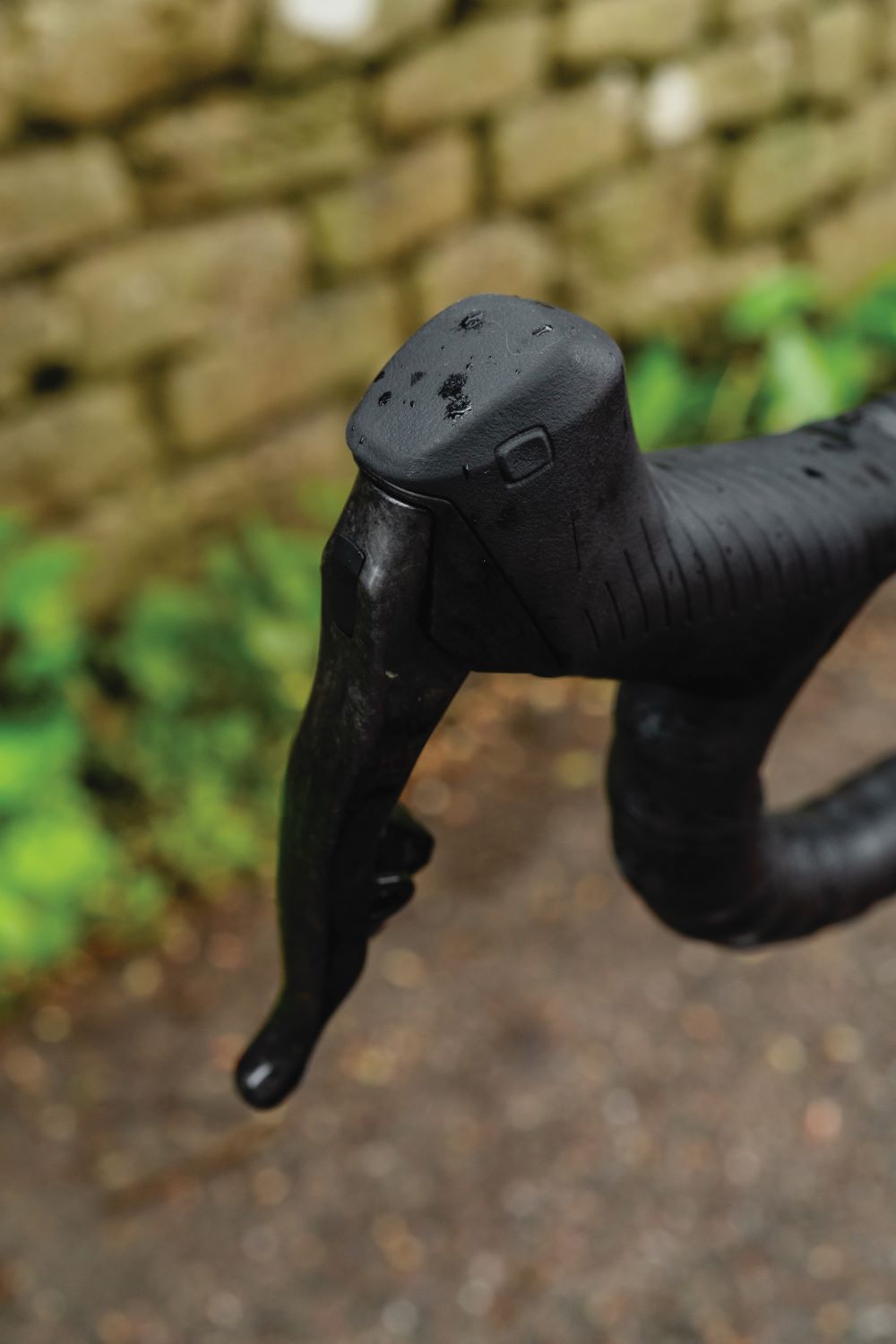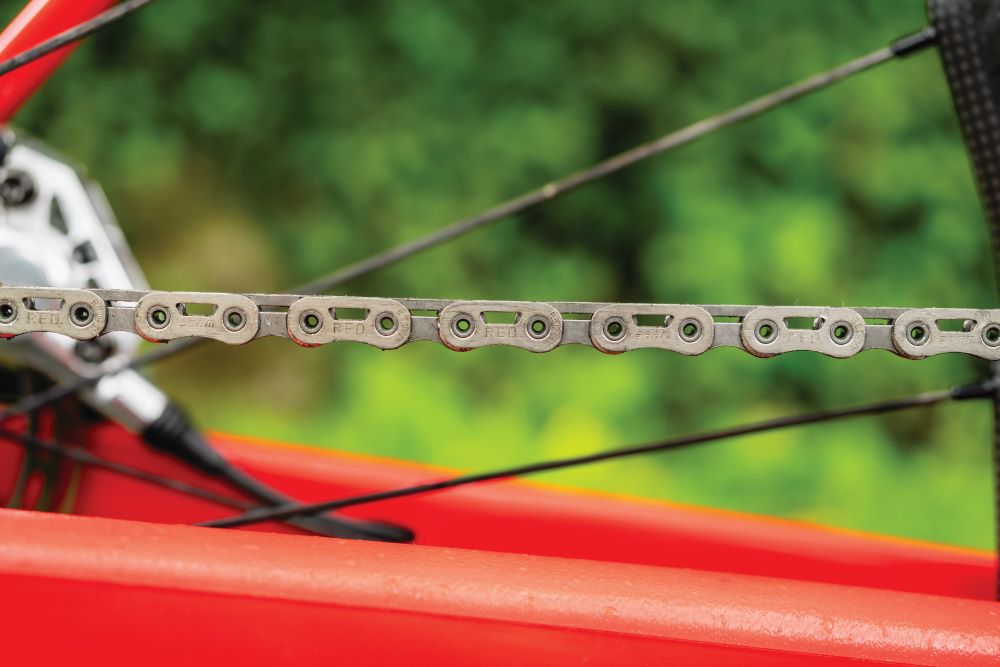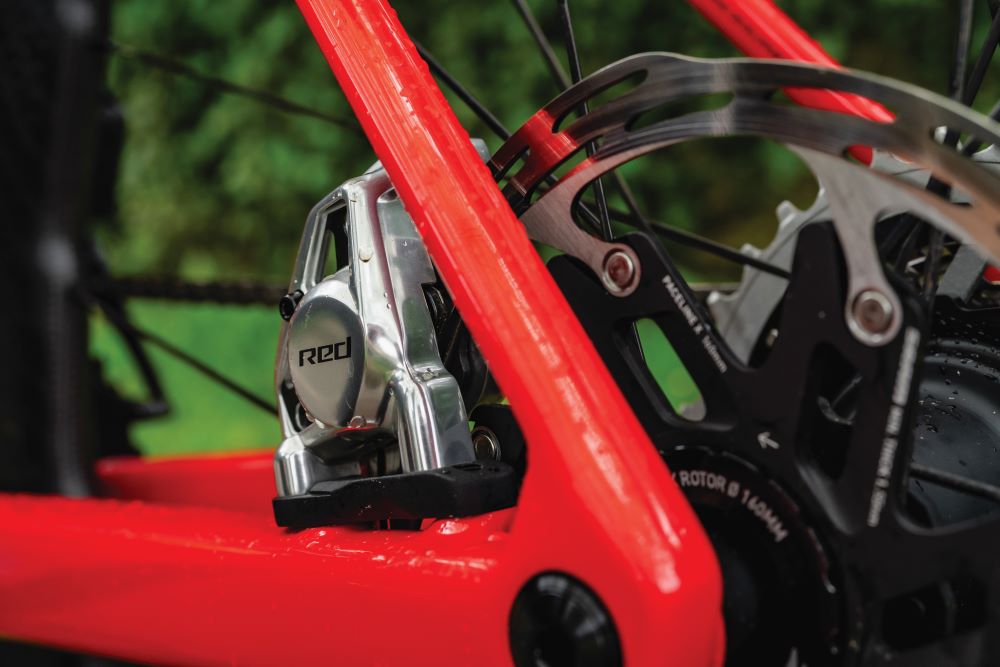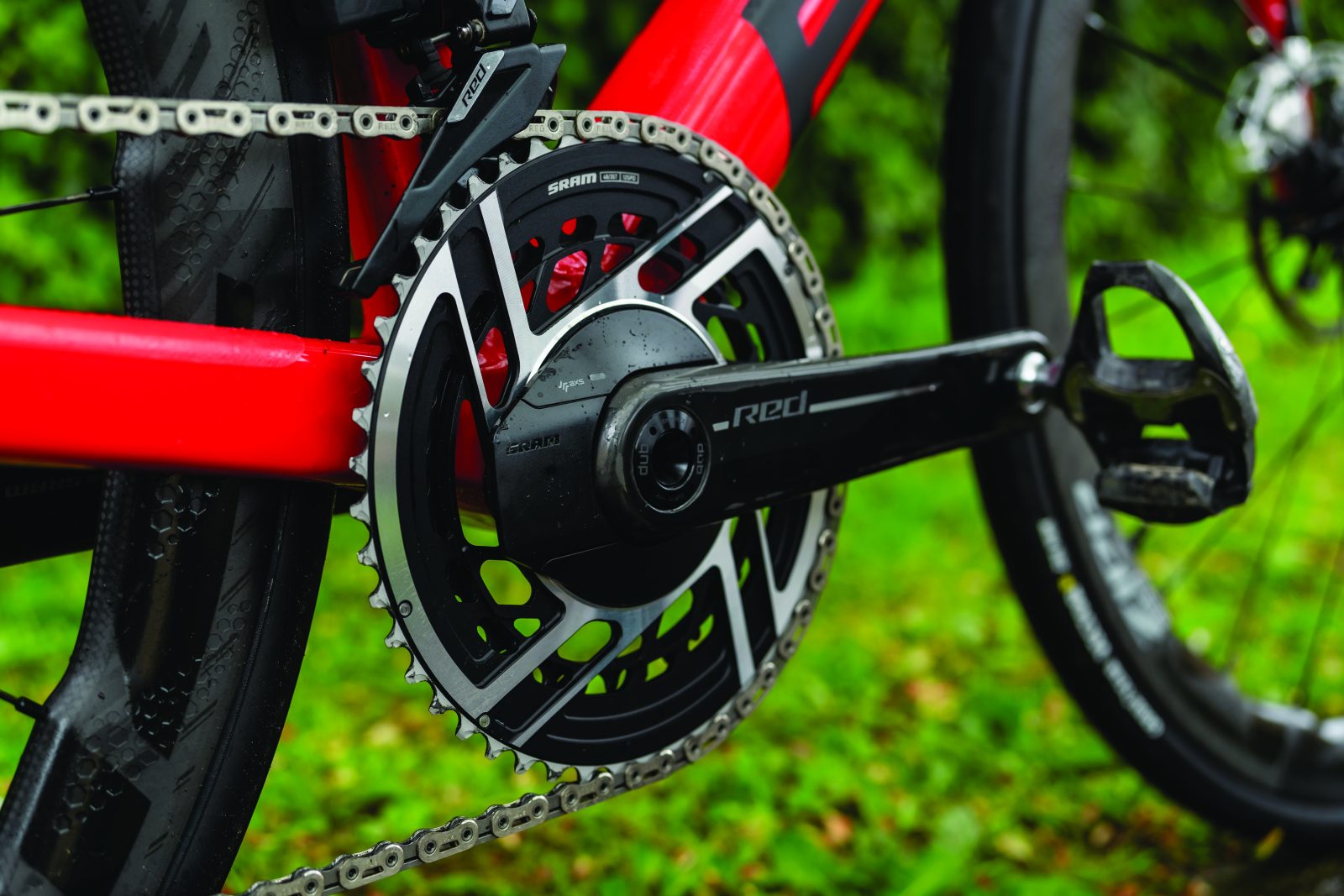Sram refines its Red AXS predecessor with improved braking, shifting and connectivity

Words Nick Squillari Photography Lizzie Crabb
In any sort of analysis, the ability to compare across points of focus is ideal.
And while the Australian Tax Office might not agree that my purchasing of bikes with varying iterations of Sram wireless shifting is enough to justify any recognition in the form of tax concessions, I know the discerning audience of Cyclist magazine feels differently.
So, with both an eTap 11sp groupset and AXS Sram Force sitting on two of my bikes, who better to take a hold of the latest offering from Sram, the updated Red AXS E1 groupset.
What’s new?
Put simply, this question (often with a tinge of suspicion) is the one most commonly asked of any update.
Understandably.
Upon last release, Red AXS went 12-speed, hydraulic disc brakes became the mainstay, a new lever shape was unveiled, and the Quarq was now bonded to the chainrings.
There was a lot in play five years ago (I am stunned half a decade has slipped by) and, ironically enough, all these talking points remain with the latest update for Sram Red.

So how’s Red AXS looking in 2024? It’s still 12-speed for road, when there was thought Sram might go to 13 sprockets – especially relevant post-launch after XPLR 13sp 1x groupsets were spotted at Unbound Gravel in late May.
Hydro road disc is now so much a feature, there is sadly no rim brake option with this release.
The original, D1 Sram Red AXS, did have a rim brake option for hashtag ‘save the rim brake’ lovers, among which I am included.
We have another new lever shape (and Bonus Buttons).
And the Quarq still remains bonded to the chainrings, another design element some had tipped to be altered.
Historical alignments aside, there is truthfully no part of this groupset that Sram has not either refined or completely redesigned.
So while this could appear to be still ‘just’ 12-speed wireless Sram Red, the devil is in the details.
Riders with small hands, rejoice
I won’t speak for the small-of-hand cycling community but, thankfully, my other half also rides.
Until now, she could not consider any AXS line due to the size of the hoods.
Coming home with the review groupset, she was immediately curious as to how well they would fit her hands.
Well enough, it seems, that in future she will consider bikes with the new Red.
My own take is that the hoods now feel closer in grip footprint to eTap 11-speed rim brake hoods than any than any other AXS lever.
Especially the pommel, which now features Sram’s new Bonus Buttons, effectively blip buttons built into the upper inside of each shifter pommel.
Either button can be programmed to interface with the shifters or other ANT+ controllable devices (like lights or your head unit).

The only thing a single button cannot do is shift the front derailleur.
That still requires a double press (I expressly asked on the off-chance of a little life hack – no dice).
They’re initially higher than you might think they need to be.
Only one hard effort in the hoods and you realise that’s intentional, to prevent any accidental ‘activation’ – though the mental image of a rear light going on and off in the sprint for the cafe is somewhat amusing.
The size reduction in the new Red AXS is due, in large part, to the altered arrangement of the pistons within the lever.
Instead of sitting vertically, the hydro pistons now run horizontally, permitting a substantial cutting down in overall size of the lever pommel, in addition to opening up capacity for ‘one finger braking’.
Again, old ‘oven mitts Squillari’ here never considered the strength required for brake lever pull until now. It’s genuinely the most fluid-feeling braking I’ve experienced on a bike – only one finger required.
And paired with updated brake callipers that have more pad clearance, a stiffened body and improved modulation, the braking experience is a noticeable step up.
Honestly, if there was just one component of the new Red groupset I could recommend you update to, the levers would be it.
‘F***ing Sram!’
You’re in rare air if you don’t know that infamous line from Bauke Mollema, expressing his annoyance at a missed front shift in the 2019 Giro d’Italia.
Sram, lambasted for years for its front derailleur, was aware improvements needed to be made.
Hand over heart, a fellow journalist and I did our very best to ship the chain. It refused.
The additional auto-trim and narrower, redesigned cage matched every one of our intentionally bad shifts.
Not only did the front derailleur switch like its life depended on it, but the rear appears to have also received an upgrade around the clutch.
Watching one another’s attempts to make the front drop, it was clear how much less slap there was in the chain.

Virtually none.
Not that there was ever any issue with Sram’s rear derailleur, it must be said, short of those thinking it’s a ‘nuanced’ point to claim Shimano still shifts faster.
This quietly updated clutch – with the vastly improved front derailleur – may spell an end to future cursing Dutchmen.
But long live the meme.
You can’t buy advertising like that.
But wait, there’s more
I know this sounds like I’m reading off the spec sheet, but yes, new Red drops 153g over the previous iteration.
In raw numbers it appears small, but that’s 5% down on the system weight and allows us to build disc brake road bikes at 6.8kg without any wildly light components.
The 10th generation TCR Advanced SL 0 with new Red, for example, will be just on the UCI weight limit of 6.8kg, including pedals, in a size M/L, sitting on a shop floor.
Incredible.
Also incredible is the inclusion of the latest Hammerhead Karoo head unit with the groupset.
For racing it’s not what I would be reaching for, but for longer days and mapping it’s exceptional.
What’s particularly notable is the integration Sram has already managed between the unit and the AXS app.
As a full ecosystem, I’ll admit using the Karoo to maximise the capabilities of your AXS setup is the optimal approach, especially considering it comes bundled with the groupset, removing the standalone unit’s retail price from the equation.
Gearing option wise, the 10 sprocket remains, much to the chagrin of drivetrain efficiency fans – myself included again.

And while AXS was applauded for better front chainring options below the regular 50/34 ‘compact’, you struggled for years if good old standard 53/39 was all you needed.
While 53/39 is not a combo option with 2024 Red, you can get 52/39, 54/41 and even 56/43 on top of 46/33, 48/35 and 50/37.
A 53/37 would have suited me to a T had it existed.
However, they are all still one-piece double ring setups, so there’s no mix and match.
The choice is impressive, but remains all we have for now.
But hey, at least the built-in Quarq power meters are reliable and accurate.
Many, I suspect, have made it this far and liked at least some of what they have seen.
As for me, after having Bonus Buttons in my life, I really do miss them (and that lever feel).
Sram has continued its impressive history of backwards compatibility, allowing you to mix and match components from this release across the AXS range.
While I suspect there might not be many gravel bikes sporting a 56/43 chainset, I can certainly envisage Sram moving a considerable number of pairs of levers and disc brake callipers (with a silver shine to make any grandmother happy).
Being lucky enough to reach for a Red eTap, then Force AXS and finally a new Red AXS bike on consecutive rides is not only a privilege, but a space that has allowed me to observe, with conviction, that there is more to this release than meets the eye.
Sram has raised the bar yet again on what a top tier groupset should offer.
It has been five years of development well spent.
You won’t be disappointed.
THE SPEC
Model Sram Red AXS
Price $7,890 with power meter, $7,030 without power meter (both include the new Karoo, which is $750 on its own)
Weight 2,496g
Chainring pairings 46/33, 48/35, 50/37, 52/39, 54/41, 56/43
Crank arm lengths 160mm, 165mm, 170mm, 172.5mm, 175mm
Cassette ratios 10-28t, 10-30t, 10-33t, 10-36t
Rotor sizes 160mm, 140mm
Contact sram.com



